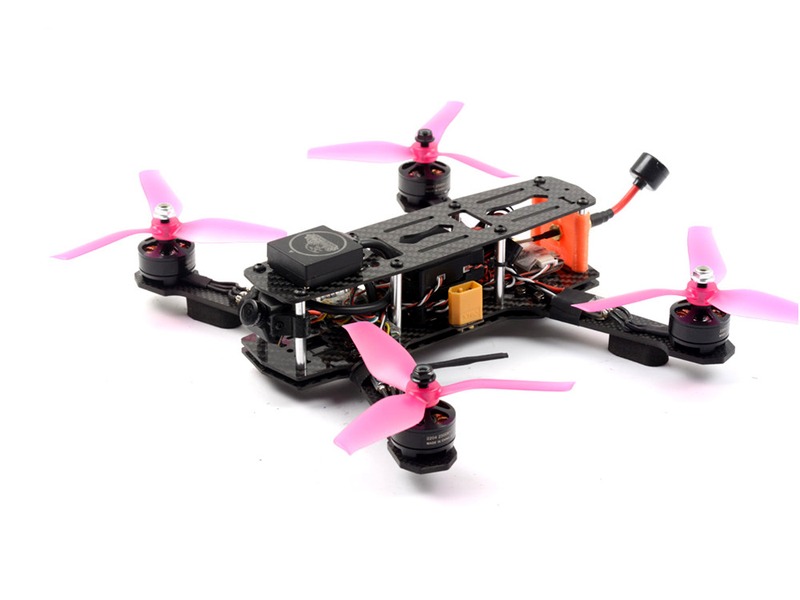How quadcopters fly?

Quadcopters are unmanned aerial vehicles (UAVs) that have four rotors instead of the usual two. The rotors are arranged in two pairs, each pair being orthogonal to the other pair. Quadcopters have become increasingly popular in recent years due to their simple operation, low cost, and relatively low impact on the environment.
Quadcopters require a great deal of control in order to remain airborne. To achieve this, a quadcopter must maintain a stable posture in the air and be able to maneuver quickly. To do this, the thrust of each of the four rotors must be adjusted in order to maintain a balance between thrust needed to keep the quadcopter airborne and the thrust required to make a maneuver.
The thrust of each of the four rotors is adjusted by varying their speed, or the amount of torque they produce. The four rotors are connected to the four arms of the quadcopter, and each arm of the quadcopter is connected to an electronic speed controller (ESC). The ESCs can adjust the speed of the corresponding motor in order to generate the desired thrust.
When the thrust of all four motors is equal, the quadcopter is in a hover. When the thrust from one motor is increased, the thrust from the opposite motor must be decreased in order to maintain a balanced hover. This allows the quadcopter to move in any direction, including up, down, left, right, forward, and backward.
In order to make a turn, the thrust from the motors on one side of the quadcopter must be increased, while the thrust from the motors on the other side must be decreased. This causes the quadcopter to turn in the desired direction. The same principle applies to making a turn to the left or right.
By controlling the speed of the four motors, the quadcopter can also be caused to roll, pitch, and yaw. To roll, the thrust from the two motors on one side of the quadcopter are increased, while the thrust from the two motors on the other side of the quadcopter are decreased. To pitch and yaw, the thrust from one motor on one side of the quadcopter is increased, while the thrust from the corresponding motor on the other side of the quadcopter is decreased.
The four motors of a quadcopter are powered by a battery. This battery provides the necessary energy to keep the quadcopter flying. The battery also has to be taken into account when considering the weight of the quadcopter, as a heavier battery will require more thrust to keep the quadcopter airborne.
In summary, quadcopters fly by adjusting the thrust of each of the four rotors in order to maintain a balanced hover and to make maneuvers. The four motors are connected to electronic speed controllers, which allow them to be controlled in order to generate the desired thrust. The battery provides the necessary energy to keep the quadcopter airborne, and its weight has to be taken into consideration when designing the quadcopter.
Comments / Question
1. Quadcopters are relatively easy to operate and can be flown by people with minimal experience.
2. Quadcopters are very agile and can maneuver in tight spaces, making them ideal for capturing aerial shots in urban environments.
3. Quadcopters are relatively inexpensive compared to other aerial photography platforms.
4. Quadcopters are relatively quiet and can be used in areas where noise pollution is an issue.
Disadvantages:
1. Quadcopters are limited in the amount of weight they can carry, making them unsuitable for larger cameras or lenses.
2. Quadcopters are limited in their range and can only fly for a few minutes before needing to be recharged.
3. Quadcopters are vulnerable to wind and weather conditions, making them unsuitable for use in certain environments.
4. Quadcopters are subject to FAA regulations, making them unsuitable for certain types of aerial photography.
1. The Motors & Propellers: These are the most important parts of a quadcopter that enable it to fly. The motors are responsible for spinning the propellers, which generate lift and thrust for the quadcopter.
2. The Flight Controller: This is the brains of the quadcopter and is responsible for controlling the motors and propellers. It is also responsible for controlling other components such as the gyroscope and accelerometer, which help the quadcopter to stay stable in the air.
3. The Battery: This is the source of power for the quadcopter and requires regular charging.
4. The Frame: This is the structure of the quadcopter that holds all the components in place.
The main components of a quadcopter interact to enable flight by providing stability, lift, thrust, and power. The motors and propellers provide lift and thrust while the flight controller controls the motors and propellers to keep the quadcopter in the air. The battery provides power to the motors, while the frame provides a stable structure to house all of the components.

